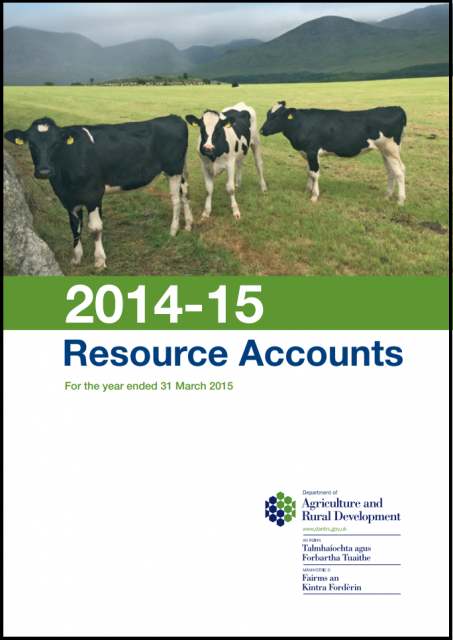 The purpose of an ‘Annual Report and Accounts’ is to provide information about an entity’s financial position, changes in financial position, financial performance and cash flows. It should be useful to a wide range of users, enabling them to assess the stewardship and accountability of management for the resources entrusted to them.
The purpose of an ‘Annual Report and Accounts’ is to provide information about an entity’s financial position, changes in financial position, financial performance and cash flows. It should be useful to a wide range of users, enabling them to assess the stewardship and accountability of management for the resources entrusted to them.
The majority of public sector bodies in Northern Ireland (NI) operate a financial year which runs from 1 April to 31 March. By summer recess most public sector accounts are audited and laid in the Assembly. From July the public therefore can access a large number of audited public sector accounts on the organisation’s website.
The 2015-16 financial year has seen a number of significant changes to the format and content of Public Sector Annual Reports and Accounts. The following post sets out the reporting requirements for Public Sector Annual reports and Accounts for the 2015-16 year onwards.
The new layout has three separate sections:
- A Performance Report;
- An Accountability Report;
- The Financial Statements.
Performance Report
The Performance Report provides organisational information, its main objectives and strategies and the principal risks it faces. It must provide a fair, balanced and understandable analysis of the organisation’s performance. It is not audited but the external auditor ensures that it is consistent with other information in the financial statements. It contains two sections – an Overview and a Performance Analysis. The Overview enables readers to understand the organisation, its purpose, key risks to achieving its objectives and its annual performance. The Performance Analysis reports on the organisation’s most important performance measures and where appropriate, its longer-term trend analysis. The Performance Report is signed and dated by the organisation’s Accounting Officer or the Chief Executive.
Accountability Report
The Accountability Report explains how the organisation meets its Assembly key accountability requirements. It has three sections: a Corporate Governance Report; a Remuneration and Staff Report; and, a Parliamentary Accountability and Audit Report. The Corporate Governance Report should explain the organisation’s configuration and governance structures and how they support its objectives. The Remuneration and Staff Report sets out the remuneration policy for directors. More specifically, it details remuneration (including pension and benefits in kind) of staff key to its operation and where relevant, the link between performance and remuneration. There is a presumption that information on named individuals will be given in all circumstances.
The Staff Report element provides additional information including:
- Number of senior civil service staff by band;
- Staff numbers and costs;
- Staff composition by sex;
- Sickness absence data;
- Consultancy expenditure;
- Exit packages.
The Parliamentary Accountability and Audit Report brings together the key Assembly accountability documents. It includes:
- The Statement of Assembly Supply and supporting notes for departments financed through the Estimates process;
- Fees and charges;
- Long term expenditure trends;
- The Certificate and Report of the Comptroller and Auditor General to the Assembly.
Financial Statements
All public sector entities produce individual or group accounts in accordance with International Accounting Standards (adapted for the public sector). The financial statements include:
- Statement of Comprehensive Net Expenditure;
- Statement of Financial Position (new name for the Balance Sheet);
- Statement of Cash Flows;
- Statement of Changes in Taxpayers’ Equity;
- Notes to the Accounts.
The headings of the Statement of Comprehensive Net Expenditure follow the organisation’s material sources of income and expenditure. The Statement of Financial Position provides details of the entity’s assets and liabilities at the end of the financial year. It is signed by the Accounting Officer, or where applicable the Chief Executive. The Statement of Cash Flows and Changes in Taxpayers’ Equity where appropriate takes account of the fact that the entity is financed by Supply (Department of Finance and Personnel). The Notes to the Accounts provide additional detail for users, on both the accounting policies adopted by the organisation and the figures contained within the core financial statements detailed above. A cross reference to the individual notes that provide the supporting detail for each line within the core financial statements heading is provided.
The Annual Report and Accounts contain a huge amount of information that people interested in an organisation can easily access and understand. It can provide answers to questions or alternatively highlight questions to enhance transparency.

